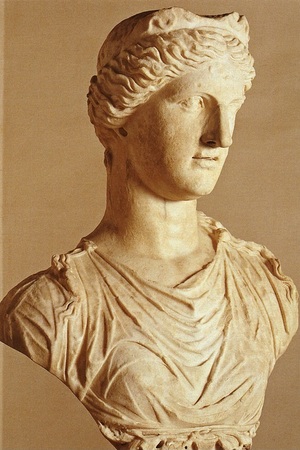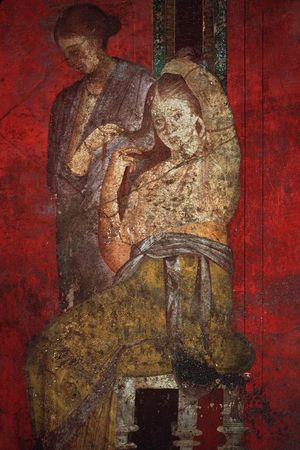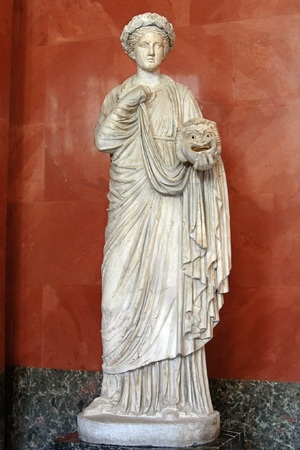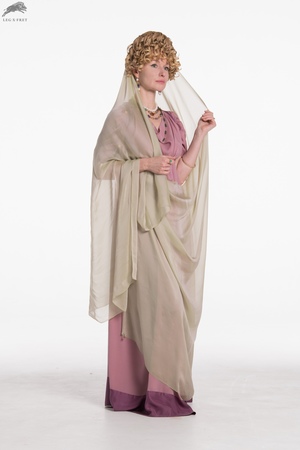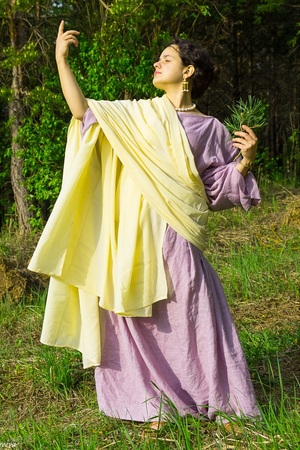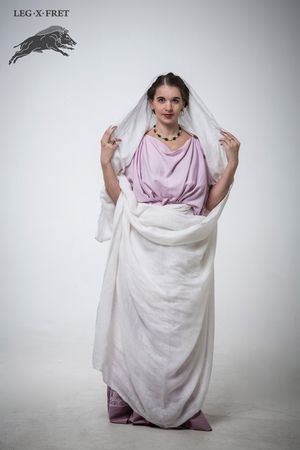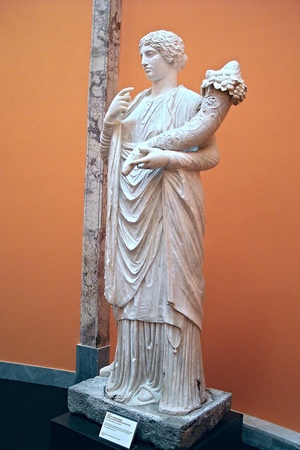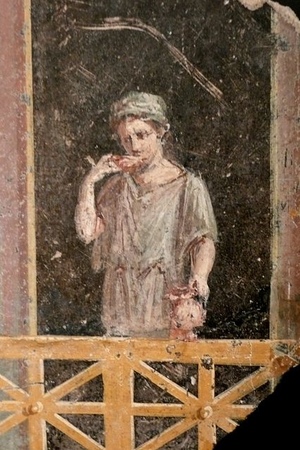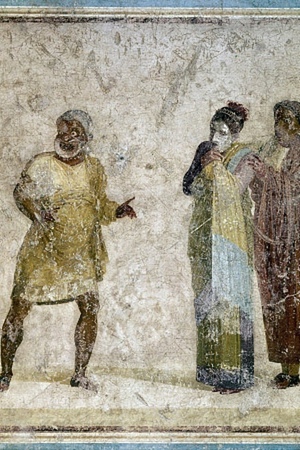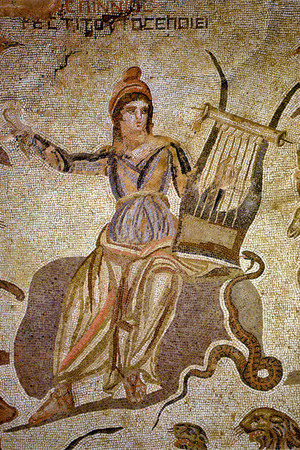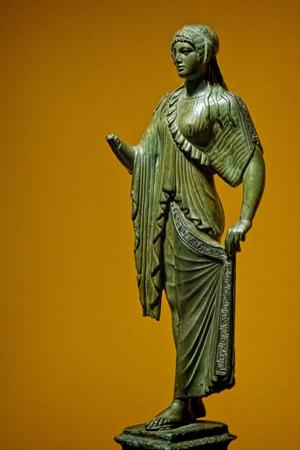Women in Ancient Rome
As in other states of the ancient era characterized by patriarchy, women in Ancient Rome had a lower social status than men and were restricted in their rights. They could not hold public office, vote, serve in the military, or attend certain public events and spectacles. Traditionally, women were in a subordinate position to men in the family (husbands or fathers).
An exemplary wife was considered to be a faithful and modest homemaker (Latin: domiseda, from "domus" meaning "home"), diligently managing the household.
 Fresco from the Villa of Mysteries, Pompeii. 1st century CE.
Fresco from the Villa of Mysteries, Pompeii. 1st century CE.
Social status
Most women had fewer rights than men. The exception was the Vestal Virgins, who had more privileges than even noble men. This was due to the special nature of the cult of Vesta, which was traditionally important to Roman religion and the state.
In ancient Rome, there were women of the following social statuses::
- Priestess
- Unmarried Aristocrat
- Commoner
- Hetaera (Lupana)
Women's clothing
Depending on social status, the attire could vary, but most outfits, except for the gladiatrix, included the following items:
Women liked to adorn themselves with jewelry, which in Ancient Rome was made very skillfully:
There was also a very elaborate fashion for hairstyles, especially among wealthy women. For a re-enactor, the most challenging part in creating the look is replicating the drapery of the dress, which in Rome was made from fine fabric, with weights attached to the ends of the clothing. Such weights can be seen on the statue of Concordia Augusta from Pompeii from the early 1st century CE.
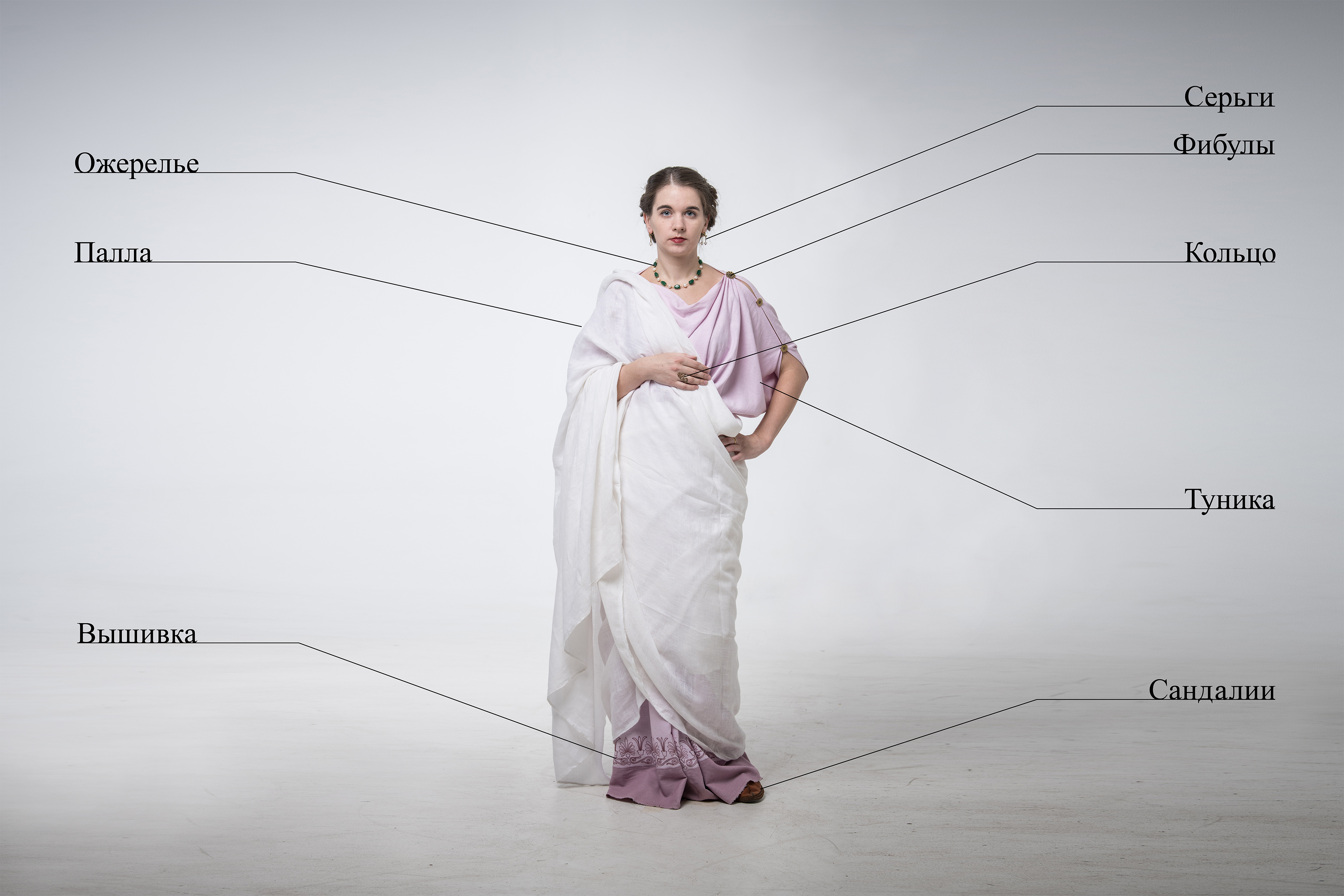
Reconaction
Before starting to assemble a clothing set, it is necessary to decide on the social status to be re-enacted. In Roman re-enactment, unlike many other eras, the image of a female warrior – a gladiatrix – is available, whose equipment is examined in detail in the "gladiators" section. The image of a priestess, for example of the cult of Isis, requires a special type of tunic. The clothing of peregrines might include elements typical of native peoples. In the most common female images, the main differences will be in the presence or absence of the palla, stola (which only matrons are allowed to wear), hairstyle, jewelry, and color schemes. Clothing for the chosen image should be sewn from fine wool or linen, and for the re-enactment of very wealthy female images, natural silk can be used.
The least expensive set of women's clothing suitable for beginner re-enactors is a long tunic with a belt and sandals, representing a slave or commoner.
Related topics
Palla, Tunic, Stola, Balteus, Subligaculum, Strophium, Sandals, Calcei, Necklace, Earrings, Armillae, Fibula, Buttons, Matron, Gladiator, Hairpin, Roman hairstyles, Women in Ancient Greece, Samnite Women
Literature
- Legal Status of Women in Ancient Rome - Shlenchak D.A.

 Gallery
Gallery






